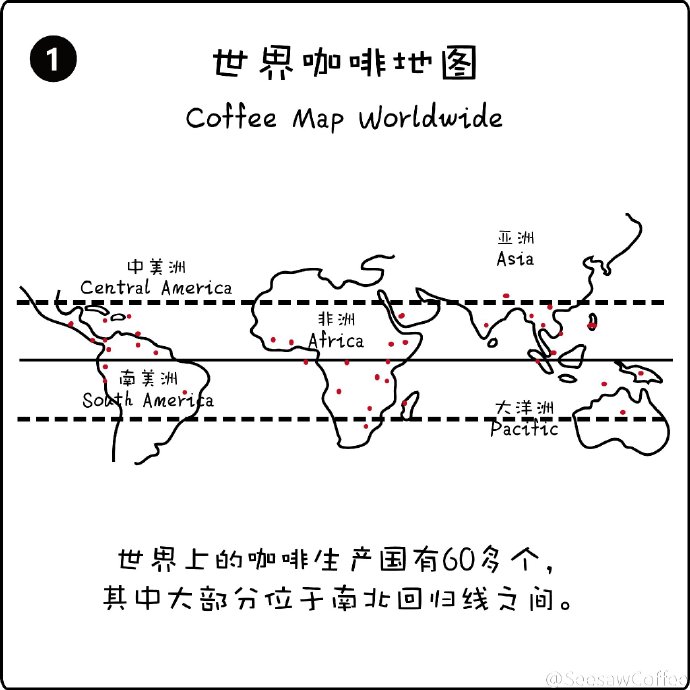Brazil is the country with the largest coffee production in the world.
Brazil is the largest coffee producer in the world. Because of the vast territory of Brazil, each farm has its own unique fragrance, no doubt, but also with the standard flavor of Brazil. Not only the coffee quality standard in Brazil is very strict, but also the coffee raw bean processing system in Brazil has reached a very high level from the world standard.
West Santos No.2 | Brazil Santos No.2
Because most traditional Brazilian coffee is processed by natural drying (coffee seeds: drying before the pulp is removed), the syrup in the pulp remains in the raw beans, so it has a sweet taste. Brazilian coffee processed in this way is the most common raw bean in boutique coffee stores. Coffee grown on an Arabica coffee tree called Bourbon is also common in Brazil. Among the coffee produced in this way, the best quality coffee is generally referred to as "Santos No.2 (Santos No 2)".
In addition, only those planted on coffee bourbon trees are called "bourbon Santos No.2 (Bourbon Santos No.2)". Santos comes from the name of the port that transports Brazilian coffee. "2" means the highest level of coffee quality. In wholesale circulation, generally remove "2", only known as "Brazil Santos" or "Brazil Bourbon Santos".
Fragrance characteristics:
Aroma | Flavor | Acidity | Sweetness | Body | Aftertaste
Roasting Point: Light | Cinamon | Medium | High | City | Fullcity | French | Italian
Variety: Criolla
Processing Method: Natural, Semi-Washed
Species: Arabica
Profile: sweet aroma, fruit notes, clean cup and pleasant aftertaste

Important Notice :
前街咖啡 FrontStreet Coffee has moved to new addredd:
FrontStreet Coffee Address: 315,Donghua East Road,GuangZhou
Tel:020 38364473
- Prev

Mocha matari is produced in the northern part of Yemen and has a strong sour taste.
Although Yemen is located in the Middle East with the Arabian Peninsula, it can actually be said that it is almost closely connected to the African continent located opposite the Red Sea. This geographical contiguity is also illustrated by the way Ethiopian coffee travels through Yemen. Ethiopian coffee processed naturally is still known as mocha. As for coffee exports, due to the complexity of the circulation process,
- Next

Price of boutique Sidamo coffee beans A brief introduction to Sidamo Coffee beans
Ethiopia has two of the best producing areas, Yiragcheffe and Sidamo. Sidamo is located in a plateau region south of Ethiopia. Sidamo has a balanced acidity and moderate consistency. In Ethiopia, people usually have a cup of mocha coffee for breakfast to replenish the spirit and vitality of the day. As Ethiopia's classification system is still very backward,
Related
- Does Rose Summer choose Blue, Green or Red? Detailed explanation of Rose Summer Coffee plots and Classification in Panamanian Jade Manor
- What is the difference between the origin, producing area, processing plant, cooperative and manor of coffee beans?
- How fine does the espresso powder fit? how to grind the espresso?
- Sca coffee roasting degree color card coffee roasting degree 8 roasting color values what do you mean?
- The practice of lattes: how to make lattes at home
- Introduction to Indonesian Fine Coffee beans-- Java Coffee producing area of Indonesian Arabica Coffee
- How much will the flavor of light and medium roasted rose summer be expressed? What baking level is rose summer suitable for?
- Introduction to the characteristics of washing, sun-drying or wet-planing coffee commonly used in Mantenin, Indonesia
- Price characteristics of Arabica Coffee Bean Starbucks introduction to Manning Coffee Bean Taste producing area Variety Manor
- What is the authentic Yega flavor? What are the flavor characteristics of the really excellent Yejasuffi coffee beans?

